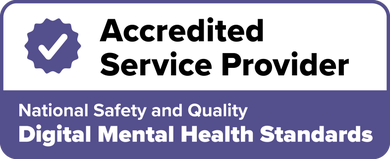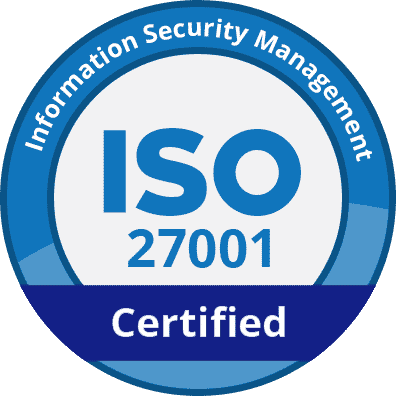13 ways to practise mindfulness at work
In a Nutshell
Practising mindfulness at work can help you feel less overwhelmed and more focused during the day.
Leaders who practise mindfulness often build more supportive and balanced teams.
Mindfulness practices don’t have to feel like a chore. Some practices can fit easily into your work routine, no matter where you work from.
Workdays can be incredibly hectic, especially on days when you have back-to-back meetings, client-facing tasks, presentations with your superiors, or even conflicts with your coworkers.
Mindfulness can help here.
Mindfulness simply means paying attention to the present moment with care and awareness of how you feel in your body. It gives you a chance to pause, check in with yourself, and bring a little more awareness to how you work, think, and interact with others.
Why mindfulness matters at work
Mindfulness at work is more than a nice idea. A study of over 2,000 adults from 130 different countries shows that mindfulness is linked to reduced stress, improved focus, and better engagement. The research participants who practised mindfulness reported feeling less overwhelmed and more connected to their work.
In Australia, organisations like Ahead for Business and Smiling Mind continue to highlight the role of mindfulness in workplace wellbeing. It’s also becoming a regular feature in many employee assistance programs that offer mindfulness tools alongside counselling and support.
Mindfulness helps create work environments where people feel calm, supported, and better able to manage the ups and downs of the day.
Benefits for employees
For employees, mindfulness offers practical benefits that can be felt across different types of roles and work settings:
Helps reduce stress and emotional exhaustion, especially during periods of overwork or tight deadlines
Supports better focus and attention, making it easier to enter a flow state where work feels more focused and less fragmented
Creates breathing room in your day, which can protect against burnout before it takes hold
Encourages more mindful communication and presence in conversations
Helps you stay grounded and maintain healthier boundaries between work and personal time
Benefits for leaders
For leaders and managers, mindfulness can support both their personal and team wellbeing. Specifically, mindfulness can support:
Clearer, more thoughtful decisions
A steadier presence in high-pressure situations
A team culture built on trust and care
More engaged, connected teams, including remote workers
A natural way to support workplace wellbeing without formal programs
13 ways to practise mindfulness at work
You don’t need to block out long periods of time to practise mindfulness. Here are some approaches that are easy to build into your normal workday.
1. Start your day with deep breaths
Before you even open your laptop or drive to your workplace, take a moment to pause and breathe deeply. Three deep breaths are often enough, but you can also do 5 to 10 if you have more time.
Feel your chest expand with every breath, and use this moment to ground yourself in your body and in the present. These slow, deep breaths can help you settle your focus and ease into the day more calmly.
2. Set an intention for the day
For some people, it’s helpful to choose a word or phrase that reflects how they want to approach their day. It might be something like“calm”, “safe”, “focused”, or “joyful.”
Keep it in mind or write it in a notebook as a gentle reminder as the day unfolds.
3. Check in with your body
Especially if you’re working from home, notice how your body feels. Is your back supported? Are your shoulders tense?
A quick stretch or posture check can help you relax and release body tension.
4. Focus on one task at a time
Multitasking often leads to more stress, not more productivity. Try focusing fully on one task before moving to the next. You may find you feel more in control, less mentally scattered, and less likely to overwork to the point of fatigue or burnout.
It might help to write down your to-dos in order of urgency or importance, then work on them one at a time.
5. Pause between tasks
After you finish one task, give yourself a short break. Even 30 seconds of stillness, a breath, or a stretch can help your mind reset before you begin something new.
If you’re working in front of a computer most days, you can use this pause to hydrate or do simple exercises.
6. Pay attention to routine tasks
Try doing one small, regular task mindfully. Whether you’re washing your mug, filing papers, or organising your inbox, focus fully on the action. It can give your mind a welcome break.
It might also help to express gratitude while doing these small tasks. You can say something like: “I’m grateful I have a few seconds to do this task,” or “I’m grateful I get to clean up my desk.”
7. Have moments of gratitude
Halfway through your day, pause and think of one thing that’s gone well. It could be a finished task, a helpful colleague, or a moment of calm. Gratitude helps shift your perspective.
8. Listen without rushing
During conversations, try to give your full attention. Instead of pressuring yourself to have a good response, try to focus more on what the other person is saying.
This kind of active listening can help you feel more sincerely connected with the other person, understand them better, and be less distracted by your own thoughts or self-consciousness.
9. Let go of what isn't in your control
Some things at work are just outside your hands. When you notice yourself getting stuck on something you can’t change, try taking a breath and gently reminding yourself that it’s okay not to have control over everything.
This simple shift in awareness can ease frustration and help you focus your time and energy on what you can do. It won’t solve everything, but it can bring a bit more calm and clarity when things feel uncertain.
10. Identify and clear out small stressors
Sometimes, it’s the little things that secretly scatter your focus and energy. It could be a messy corner in your room, too many tabs open, or poor lighting. For some people, not feeling put together can leave them feeling a bit off, especially during meetings or conversations.
Try noticing what small things might be stressing you out. Tidy your space, close a few tabs, refill your water tumbler, or take a moment to freshen up. These quick adjustments can help you feel more at ease in your space and more confident in how you show up.
11. Bring awareness to your movements
Next time across the office, to the kitchen, or between rooms, try to slow down slightly. Notice the feeling of your feet on the floor, the rhythm of your steps, the objects on the shelves, and how your body moves.
12. Reflect before ending your day
Before you switch off for the day, take a minute to reflect. What went well? What challenged you? Is there anything you can let go of before you finish?
This small habit can make the shift from work to personal time feel more intentional. It’s a chance to let go of any leftover tension and recognise your efforts, even if the day didn’t go perfectly.
13. Bring mindfulness into team settings
Mindfulness doesn’t have to be a solo practice. If you’re in a team, you might suggest starting meetings with a short pause, a deep breath together, or a quick check-in. It can be as simple as asking, “How’s everyone feeling today?”
These small rituals help people feel more present and connected. They create a shared sense of care and can gently shift the tone of the meeting, especially during busy or stressful times.
If you're in a leadership role and not sure how to introduce mindfulness without it feeling awkward, speaking with an EAP counsellor can help. They can offer insights and practical ways to weave mindfulness into your leadership style in a way that feels genuine and supportive.
Final thoughts
It’s okay if mindfulness doesn’t feel natural or easy at first. What matters most is trying your best to show up at work with a bit more intention and kindness towards yourself. The more you practise, the more natural it becomes.
If you're feeling under pressure or finding it hard to switch off, it might help to talk to someone. Your workplace's employee assistance program may offer support or tools to help you build mindfulness into your day.
You can also connect with a therapist who understands the challenges of modern work and can guide you toward simple, sustainable mindfulness exercises.
Essential Reading
Free Mental Health Tests
Frequently Asked Questions
Yes, absolutely. Mindfulness isn't just meditation. It includes simple actions like taking a breath, focusing on one task, or listening fully during a conversation.
Definitely. Remote employees can try regular body check-ins, setting a workday intention, or doing a short reflection at the end of the day to mark the shift into personal time.
Some people feel more focused or calmer after just one mindful pause. For others, it takes a few weeks of practice. The key is to keep the practice simple and consistent.
No. While mindfulness is a useful tool, it's not a substitute for professional mental health support. If you're struggling, reach out to a therapist or access your employee assistance program.
Start with something small and low-pressure, like a short pause before meetings or a check-in question. You can also use moments like “R U OK? Day” or casual team catch-ups to gently highlight the value of mental health and mindfulness.
These are natural openings to start a conversation without making it feel forced. Leading by example and keeping things optional can go a long way in making it feel genuine.
Recommended Therapists Available Now
NSW
Psychologist
I am a registered psychologist passionate about helping people navigate life's challenges with greater clarity, self-compassion, and resilience. If you're feeling overwhe...More
NSW
Clinical Psychologist
I'm qualified as a Clinical Psychologist and I work with a deep respect for the transpersonal. At the heart of my work is an invitation to explore our inner nature and th...More
NSW
Psychologist
I'm a registered psychologist with over 10 years of experience supporting children, parents, and adults to navigate life's challenges with greater confidence and ease. My...More








